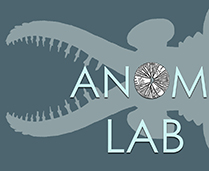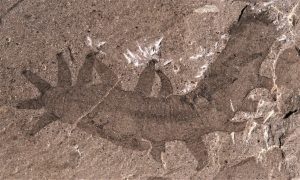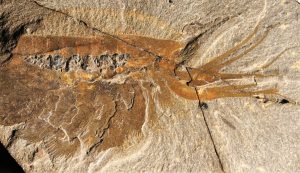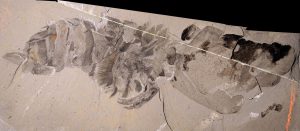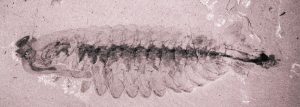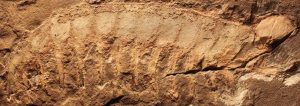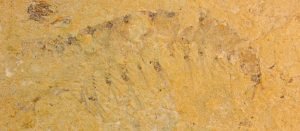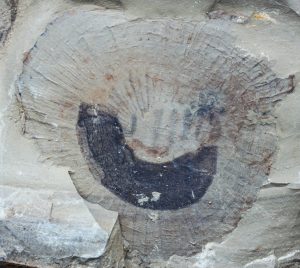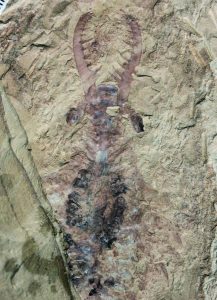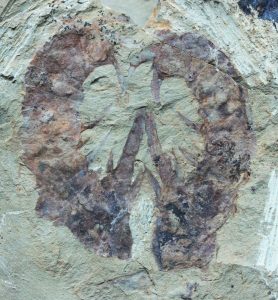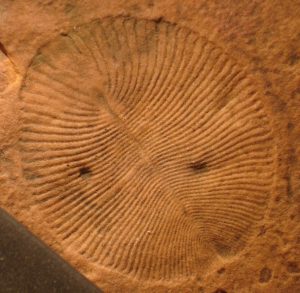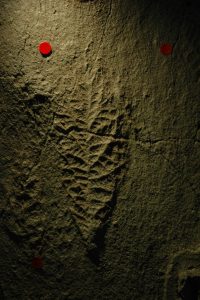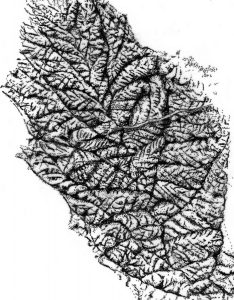Research Overview
Normally fossils are thought of as shells and bones preserved in sediments. But many fossils preserve much more than just these hard mineralized parts, even allowing us to find fossils of completely soft-bodied organisms. The fossil record now contains an astonishing record of eyes, guts, skin, internal organs, and even nervous systems and brains. Many of the fossils that we examine in the ANOM lab are exceptionally preserved fossils with soft tissues from the great Lagerstätten fossil sites of the Ediacaran and Cambrian Periods. This include famous fossil localities such as the Burgess Shale from the Middle Cambrian of Canada, as well as equivalent fossil sites from China (Chengjiang), Australia (Emu Bay Shale), Morocco (Fezouata), and United States (Pioche, Wheeler). Fossil sites from the Ediacaran Period are also noted for their exceptional quality of preservation with complex soft bodied organisms known as rangeomorphs found in exquisite detail all around the world.
Our team has developed a strong interest in how these fossils come to be preserved and much of our research focusses on the science of fossil preservation – “Taphonomy” – which comes from the Greek meaning “laws of the grave”. In order to understand how exceptional fossils with extraordinary characters form we examine the sediments that they are found in, conduct mapping fieldwork to understand the context under which the rocks formed, examine the chemistry of the rocks and the fossils so we can understand what minerals are preserving the tissues, and undertake experiments in the laboratory to understand how organisms decay. All of our active research projects include taphonomic work of this kind in some way.
Exceptional fossils are rare and each is unique in its own way. This presents many challenges for studying these fossils as special methods have to be developed to image, analyse, and examine the anatomy of the fossils themselves. This leads to our groups interest in novel imaging and analysis techniques and how they can be applied to a suite of weird and unique fossils. Each specimen presents new and exciting challenges as we work out innovative ways to look at the ever more amazing creatures found in the fossil record.
Key Publications
- Saleh, F., Antcliffe, J.B., Lefebvre, B., Pittet, B., Laibl, L., Perez Periz, F., Lustri, L., Gueriau, P. & Daley, A.C. 2020. Taphonomic bias in exceptionally preserved biotas. Earth and Planetary Science Letters 529, 115873.
- Drage, H.B., Holmes, J.D., Garcia-Bellido, D.C. & Daley, A.C. 2018 An exceptional record of trilobite moulting behaviour preserved in the Emu Bay Shale, South Australia. Lethaia 51, 473-492.
- Brasier, M.D., Norman, D.B., Liu, A.G., Cotton, L.J., Hiscocks, J.E.H., Garwood, R.J., Antcliffe, J.B. & Wacey, D. 2017. Remarkable preservation of brain tissues in an Early Cretaceous iguanodontian dinosaur. Geological Society Special Publication 448, 383-398.
- Brasier, M.D., Antcliffe, J.B., Saunders, M. & Wacey, D. 2015. Changing the picture of Earth’s earliest fossils (3.5-1.9 Ga) with new approaches and new discoveries. PNAS 112, 4859-4864.
- Liu, A.G., McIlroy, D., Antcliffe, J.B. & Brasier, M.D. 2011. Effaced preservation in the Ediacara biota and its implications for the early macrofossil record. Palaeontology 54, 607-630.
- Antcliffe, J.B. & Brasier, M.D. 2011. Fossils with Little Relief: Using Lasers to Conserve, Image, and Analyze the Ediacara Biota. Topics in Geobiology 36, 223-240.
- Brasier, M.D., Antcliffe, J.B. & Callow, R.H.T. 2011. Evolutionary Trends in Remarkable Fossil Preservation Across the Ediacaran-Cambrian Transition and the Impact of Metazoan Mixing. Topics in Geobiology 32, 519-567.
